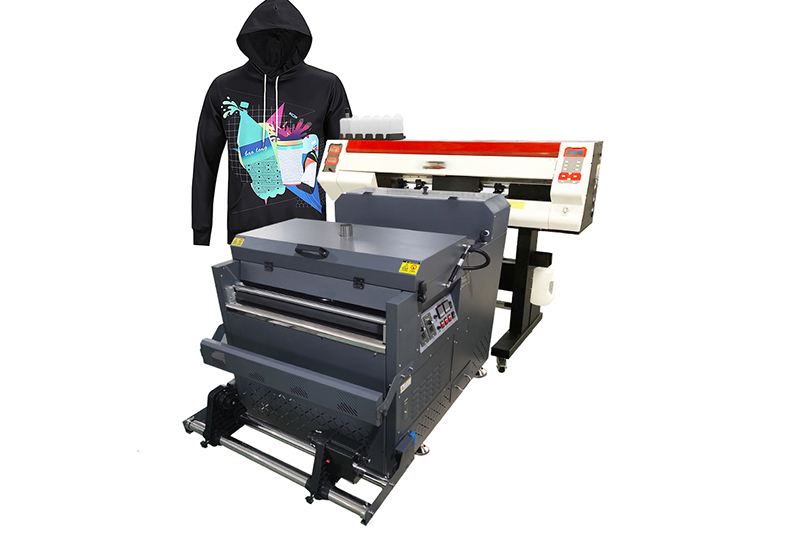DTF printing involves the transfer of digital images onto fabric using specialized DTF printer technology. Here's an exploration of the principles and image transfer techniques involved in DTF printing:

1. DTF Printer Technology:
a. Printhead Technology: DTF printers typically use inkjet printhead technology to deposit ink droplets onto the fabric. Different printhead types, such as piezoelectric or thermal, can be used depending on the printer model.
b. Ink Types: DTF printers use specific ink formulations designed for textile printing. These inks may be pigment-based, dye-based, or sublimation-based, depending on the desired application and fabric type.
c. Ink Delivery System: DTF printers have an ink delivery system that supplies ink to the printheads. This system ensures a consistent flow of ink for accurate image deposition.
2. Image Preparation and Processing:
a. Design File: Digital images or designs are prepared using graphic design software. These images can be created from scratch or obtained from various sources.
b. Color Separation: In some cases, color separation is performed to separate the design into individual color channels. This is done to prepare the image for accurate color reproduction during printing.
c. RIP (Raster Image Processor): The design file is processed by a RIP software that converts the digital image into a format suitable for the DTF printer. The RIP software controls ink deposition, color management, and other print parameters.
3. Fabric Preparation:
a. Pre-Treatment: Before printing, the fabric is often pre-treated with a coating or pre-treatment solution. This helps enhance ink absorption, color vibrancy, and wash durability. The pre-treatment can be applied manually or using specialized pre-treatment machines.
b. Drying: After pre-treatment, the fabric is dried to remove excess moisture and ensure optimal conditions for ink deposition.
4. Printing Process:
a. Ink Deposition: The DTF printer deposits ink droplets onto the fabric using the printheads. The inkjet printheads release tiny droplets of ink onto the fabric surface, following the instructions provided by the RIP software.
b. Heat Transfer and Fixation: After the ink is deposited, heat and pressure are applied to the fabric using a heat press or similar device. This heat transfer process helps the ink bond with the fabric fibers, resulting in a permanent image. The specific temperature, pressure, and duration of heat transfer depend on the ink and fabric type.
5. Finishing and Post-Processing:
a. Washing and Curing: After printing and heat transfer, the fabric may undergo washing or curing processes to enhance color fastness, durability, and washability. This can involve rinsing excess ink, drying, or curing with heat or UV light.
b. Finishing Techniques: Additional finishing techniques such as steaming, ironing, or applying protective coatings may be used to further enhance the appearance and longevity of the printed fabric.
DTF printing combines advanced printer technology, image processing, and specialized ink formulations to achieve high-quality digital image transfer onto textiles. Understanding these principles and techniques can help optimize the DTF printing process and achieve desired results on various fabric types.
kenteer has launched DTF printers for customers . If you have any needs, you can contact us for a quote.
